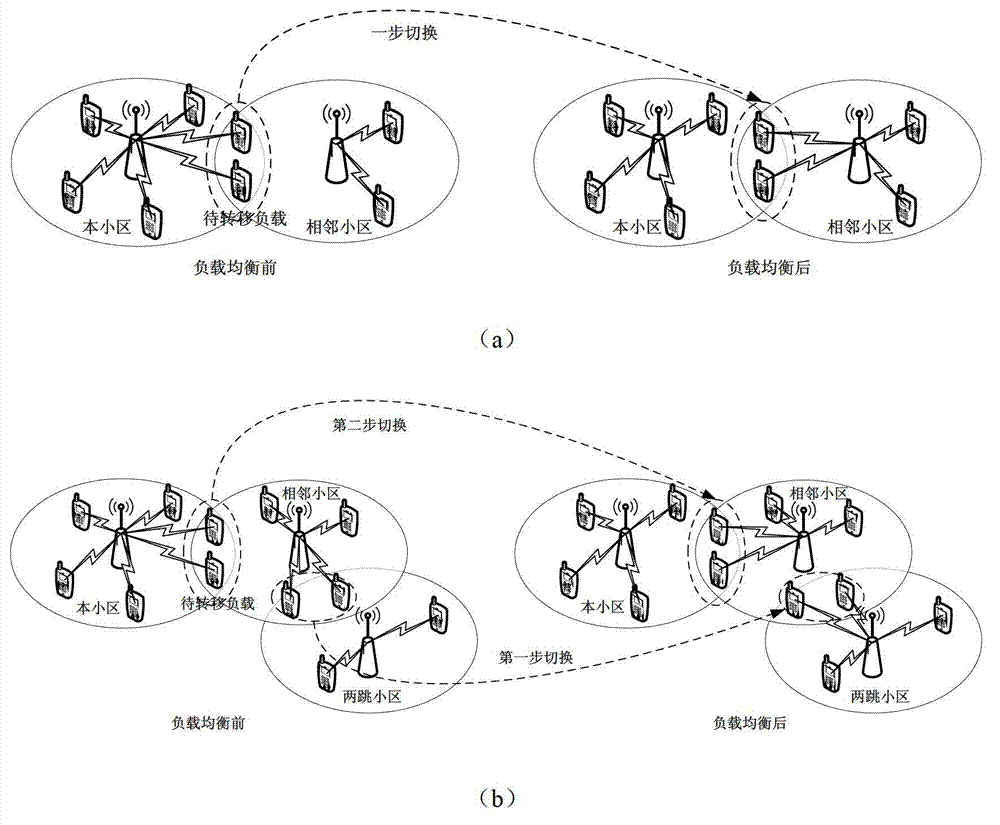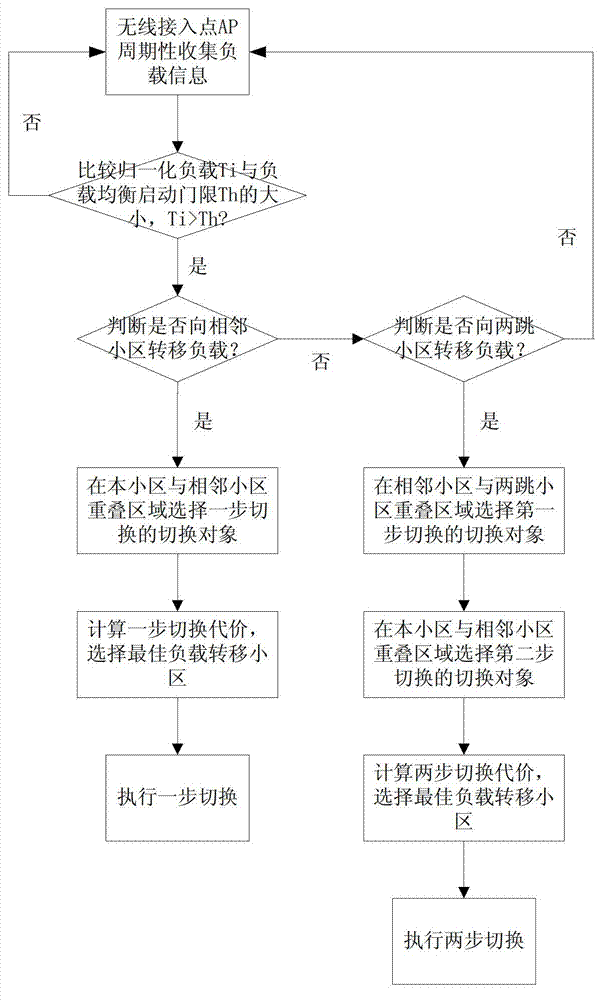Load balancing method among nonadjacent heterogeneous cells in ubiquitous network
An adjacent cell and load balancing technology, applied in the field of communication, can solve the problems of not considering the differences of different networks in heterogeneous networks, not being able to realize load transfer by switching users, and not taking into account, so as to achieve low switching cost and good communication quality, effect of extending range
- Summary
- Abstract
- Description
- Claims
- Application Information
AI Technical Summary
Problems solved by technology
Method used
Image
Examples
Embodiment Construction
[0041] The present invention will be further described below in conjunction with the accompanying drawings.
[0042] The application scenarios of the present invention are as figure 1 As shown, among them, figure 1 (a) is a one-step handover scenario diagram, which describes the scenario in which the load to be transferred is transferred from the cell to the adjacent cell when there is an adjacent cell that meets the condition of receiving the load to be transferred in the cell; figure 1 (b) is a two-step handover scenario diagram, which describes the two-hop cell that first transfers part of the load in the adjacent cell to the acceptable load when the load in the adjacent cell is too heavy to meet the conditions for receiving the load to be transferred in the cell , and then transfer the load to be transferred in the current cell to the adjacent cell.
[0043] refer to figure 2 , the steps of the present invention to perform load balancing between non-adjacent heterogene...
PUM
 Login to View More
Login to View More Abstract
Description
Claims
Application Information
 Login to View More
Login to View More - R&D
- Intellectual Property
- Life Sciences
- Materials
- Tech Scout
- Unparalleled Data Quality
- Higher Quality Content
- 60% Fewer Hallucinations
Browse by: Latest US Patents, China's latest patents, Technical Efficacy Thesaurus, Application Domain, Technology Topic, Popular Technical Reports.
© 2025 PatSnap. All rights reserved.Legal|Privacy policy|Modern Slavery Act Transparency Statement|Sitemap|About US| Contact US: help@patsnap.com



